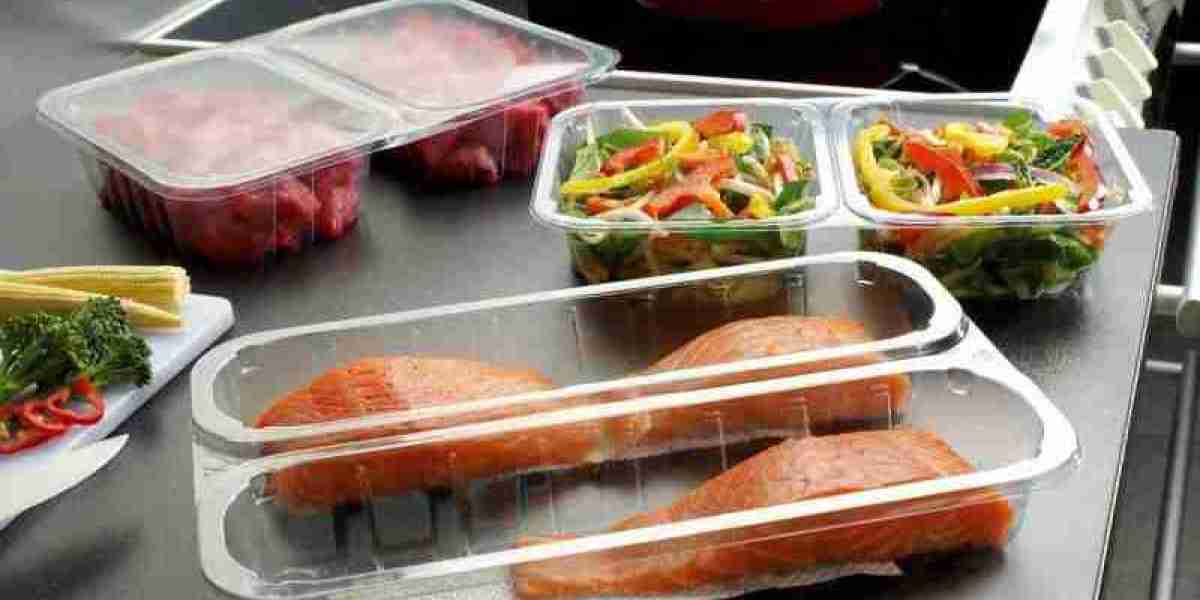On-the-Go Food Packaging Market: Restraints
The on-the-go food packaging market has witnessed significant growth in recent years, driven by busy lifestyles, changing consumer preferences, and increasing demand for convenient, ready-to-eat meals. As consumers seek more flexibility in their daily routines, the need for packaging solutions that can preserve the freshness and safety of food while being easy to carry and dispose of has surged. However, despite the growth potential, the market faces several restraints that could impede its future development. These challenges range from environmental concerns to regulatory limitations and cost factors that impact both manufacturers and consumers.
1. Environmental Concerns
One of the most pressing challenges faced by the on-the-go food packaging market is the growing concern over the environmental impact of packaging materials. Many of the packaging solutions currently in use—such as single-use plastics, styrofoam, and other non-biodegradable materials—are contributing to an increasing waste problem. The accumulation of plastic waste has led to widespread environmental damage, affecting ecosystems, wildlife, and natural resources. In response to this, governments, environmental organizations, and consumers are calling for the reduction or elimination of plastic packaging in favor of more sustainable alternatives.
Biodegradable and recyclable packaging materials have emerged as potential solutions, but they are not without their own set of challenges. For example, biodegradable packaging can be more expensive than traditional plastics, which adds to the overall cost of production. Additionally, while recyclable materials are better for the environment, the lack of proper recycling infrastructure in many regions means that these materials often end up in landfills, negating their environmental benefits.
As awareness about environmental issues increases, governments around the world are implementing stricter regulations on packaging waste. The European Union, for instance, has introduced legislation aimed at reducing single-use plastics, which has forced many food manufacturers to seek alternative packaging solutions. In the United States, similar initiatives are gaining momentum, with various states implementing bans on certain plastic products. These regulations could create operational challenges for manufacturers, as they must invest in new technologies and packaging designs that meet sustainability standards.
2. High Production Costs
The shift towards sustainable packaging materials often comes with a higher price tag, both in terms of raw materials and production processes. For instance, biodegradable packaging made from plant-based materials such as cornstarch or sugarcane often costs more than traditional plastic packaging. While consumers are becoming more environmentally conscious, they are also price-sensitive, particularly in the competitive food industry. The higher costs associated with sustainable packaging could lead to increased prices for on-the-go food products, potentially reducing demand, particularly among lower-income consumers.
Additionally, the production of sustainable packaging materials requires specialized equipment and technologies, which can further drive up manufacturing costs. Many small and medium-sized food manufacturers may find it challenging to make the necessary investments in these technologies, limiting their ability to adapt to evolving consumer demands for eco-friendly packaging.
3. Logistical Challenges and Shelf Life Issues
On-the-go food packaging must meet stringent requirements for food safety, freshness, and convenience. Packaging must be able to protect food from external factors such as air, moisture, and contaminants while also ensuring that it remains fresh over extended periods of time. This is particularly challenging for perishable items like salads, sandwiches, and dairy products.
The use of advanced packaging technologies, such as modified atmosphere packaging (MAP) and vacuum sealing, can help extend the shelf life of on-the-go food products. However, these technologies often require specialized equipment and can add to the overall cost of production. Moreover, not all packaging solutions are universally effective across different types of food, which can lead to inconsistency in product quality.
Logistical challenges also arise when food manufacturers need to ensure that packaged products are transported and stored under optimal conditions. Temperature control is particularly critical for perishable items, and improper handling during distribution can result in spoilage or contamination, negatively impacting consumer confidence and sales.
4. Consumer Preference for Convenience and Minimalist Packaging
While convenience is a primary driver of the on-the-go food packaging market, consumer preferences are evolving towards more minimalist packaging. Many consumers now prefer food packaging that is simple, easy to open, and doesn't require excessive plastic or material waste. This shift towards minimalist packaging puts pressure on manufacturers to balance convenience with sustainability.
Packaging that is too bulky or complex may detract from the appeal of on-the-go food products. Overly intricate designs or excessive use of materials can also lead to inefficiencies in production and higher costs. As a result, manufacturers must continually innovate to strike a balance between meeting consumer demands for both convenience and sustainability while keeping costs in check.
5. Regulatory and Safety Challenges
The on-the-go food packaging market is also subject to a range of regulatory and safety requirements, which vary across regions and countries. These regulations govern aspects such as labeling, food safety standards, and the materials that can be used for packaging. Compliance with these regulations can be time-consuming and costly, particularly for manufacturers that operate in multiple regions with different standards.
For example, some countries have strict guidelines regarding the types of materials that can be used in direct contact with food, and manufacturers must ensure that their packaging does not leach harmful substances into the food. Additionally, regulatory authorities require manufacturers to comply with food safety standards related to product labeling, including nutritional information and allergen warnings. Ensuring that packaging meets these standards requires regular testing and quality assurance processes, which can add to production costs and complexity.
6. Supply Chain Disruptions
The global supply chain for packaging materials has been subject to disruptions in recent years, exacerbated by events such as the COVID-19 pandemic, geopolitical tensions, and fluctuations in raw material prices. These disruptions can lead to delays in sourcing packaging materials, increased costs, and limited availability of certain materials.
For example, the pandemic caused significant delays in the production and transportation of packaging materials, which in turn impacted the on-the-go food packaging market. Manufacturers may face challenges in obtaining the necessary materials for packaging, leading to delays in production and increased costs. Furthermore, volatility in the prices of raw materials such as plastic resin and paper can make it difficult for manufacturers to plan their costs effectively.
Conclusion
While the on-the-go food packaging market presents significant opportunities for growth, it also faces several important restraints that must be addressed to ensure its continued success. Environmental concerns, high production costs, logistical challenges, consumer preferences for minimalist packaging, regulatory hurdles, and supply chain disruptions all pose potential obstacles to market expansion. To overcome these challenges, manufacturers will need to invest in innovative packaging solutions that strike a balance between convenience, sustainability, and cost-effectiveness. Additionally, the ongoing evolution of regulatory standards and consumer preferences will require the industry to remain adaptable and responsive to shifting demands in the market.




